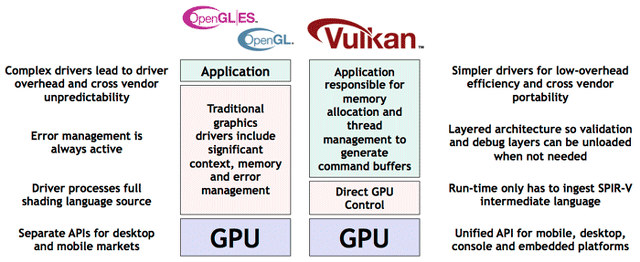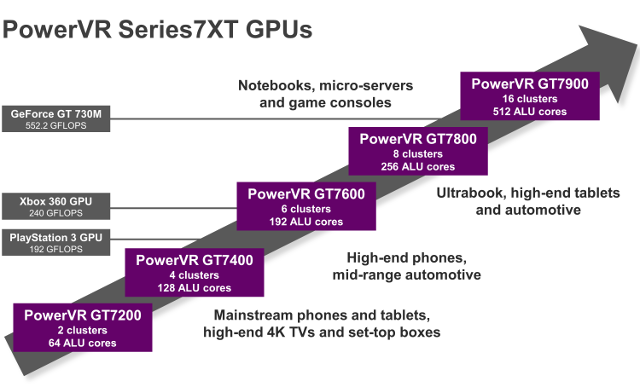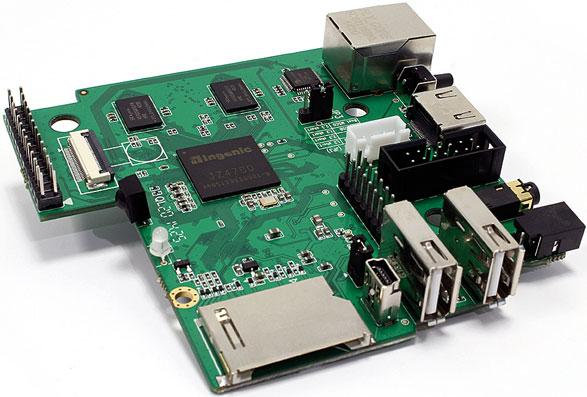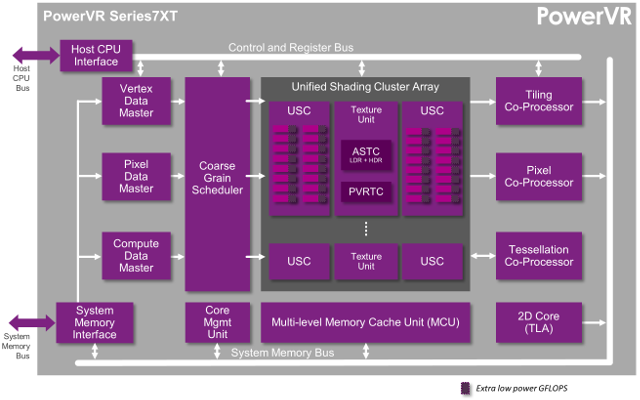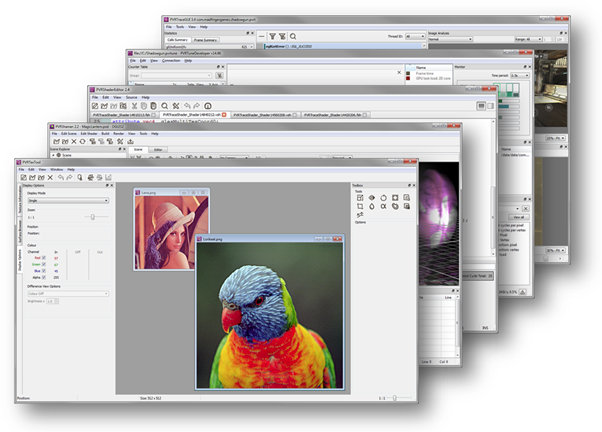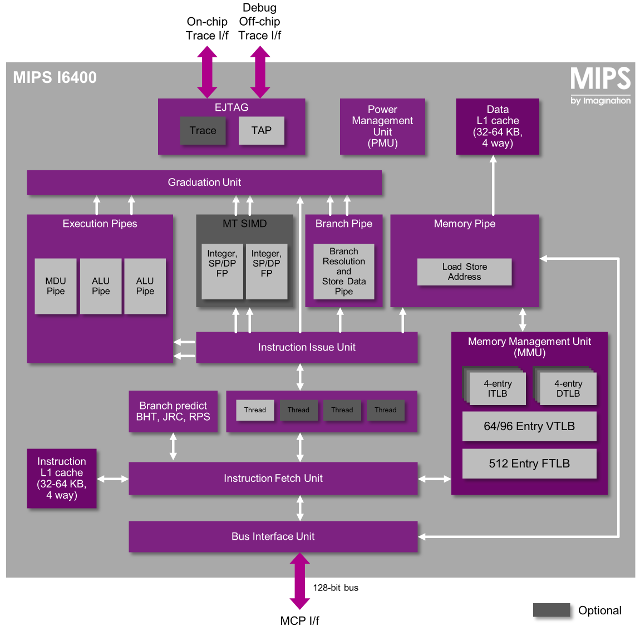When I write about a new processor with a PowerVR GPU, I can be sure there will be one or two comments saying something like “It has a PowerVR GPU, it’s a non-starter”, mostly because of the status of graphics drivers in Linux. Luc Verhaegen (libv) also made a presentation at FOSDEM 2013 listing various open source projects for GPUs found in ARM processors and PowerVR was the only one without any community project. Bear in mind that apart from Nvidia, and to some extend Broadcom for the VideoCore IV GPU found in BCM2835 / BCM2836 processors used in Raspberry Pi boards, no other companies have released user space drivers for their GPUs, and all work is done by volunteers for other open source GPU drivers, and I’m not sure any of them work 100% yet. Imagination has already provided working GPU drivers for their MIPS Creator-CI20 board, these are […]
Firefox OS Ported to MIPS Based Tablet (Ingenic JZ4780)
Imagination has announced that an experimental version of Firefox OS has been ported to a reference tablet powered by Ingenic JZ4780, a MIPS based processor, that’s also used in MIPS Creator CI20 development board, and that the company organized a raffle to send 15 of these tablets for people to try or develop on. The tablet is said to cost less than $100, runs either Firefox OS or Android 4.4 KitKat, and comes with the following specifications: SoC – Ingenic JZ4780 dual core MIPS32 processor @ 1.2 GHz with Imagination PowerVR SGX540 GPU. 32kI + 32kD per core, 512K shared L2. System Memory – N/A Storage – N/A Display – 9.7” screen; 1024 x 768 resolution Video Output – mini HDMI port Audio – Headphone jack, stereo speakers, microphone Connectivity – 802.11 b/g/n Wi-Fi, Bluetooth 4.0 USB – 1x Micro USB port Camera – Front and rear cameras Misc – […]
Meet Vulkan, The Successor of OpenGL and OpenGL ES 3D Graphics APIs
So far embedded systems are typically using SoCs with GPU supporting OpenGL ES, a subset of the full fledge OpenGL API used in desktop computers and workstations. These royalty-free standards are defined by Khronos Group non-profit organization, and as features in the embedded space and traditional computers merge, the group has now revealed the next-generation OpenGL specs will be called Vulkan. The new API will run on GPUs supporting OpenGL ES 3.1 or greater, take less CPU resources than its predecessors, and support multiple command buffers that can be created in parallel. More work will be required at the application level, but direct GPU control by the drivers will apparently result in less memory copies improving performance, or at least off-loading the CPU. It might be transparent to developers using game engines. GPU drivers will also be less complex. Vulkan will also use the new SPIR-V language shared with OpenCL […]
Imagination PowerVR GT7900 GPU is Made for Game Consoles and Notebooks
Imaginatino Technologies has just introduced the most powerful GPU of their new PowerVR Series7 GPU family with GT7900 featuring 16 unified shading clusters and 512 ALU cores for game consoles, micro-servers, and notebooks. PowerVR GT7900 is still an embedded GPU with support for OpenGL ES 3.1 + AEP (Android Extension Pack) compatibility, full hardware support for tessellation and ASTC LDR and HDR texture compression standards. The new GPU delivers up to 800 GFLOPS (FP32) or 1.6 TFLOPS (FP16) graphics and compute performance at 800 MHz (using 16 nm FinFET+ manufacturing process), which compares to about 550 GFLOPS (FP32) for an Nvidia GeForce GT730M at comparable frequency. This is even more powerful than the Maxwell GPU found in Tegra X1 which delivers 1+ TFLOPS (FP16), although the Nvidia processor may have a lower power envelope. Combined with PowerVR Series5 decode and encode video processors and PowerVR V2500 camera processor, GT7900 can […]
MIPS Creator CI20 Development Board is Now Available for $65
When Imagination Technologies first announced their developer program for MIPS Creator CI20 board, they did not disclose the price, but based on the specifications I estimated that a decent price would be $70 o $80. The company has now announced broad availability of the board, which can be pre-ordered for just $65 or 50 GBP depending on the continent you live in, with shipping scheduled for the end of January 2015. This development board is based on Ingenic JZ4780 dual core MIPS processor with 1GB DDR3, 8GB flash, and features an HDMI output up to 1080p, Audio in and out, a Fast Ethernet RJ45 port, a Wireless module with Bluetooth 4.0 and Wi-Fi, an IR receiver, and expansion headers. Several projects have already been ported by developers who got their free board a few months, ago including XBMC/Kodi, several games such as Spiral Episode 1, and beside Android 4.4 and […]
Imagination Technologies Introduces PowerVR Series7 GPUs with Up to 512 Cores, Virtualization Support
Imagination Technologies has announced a new PowerVR Series7 GPU architecture that will be used in their high end PowerVR Series7XT GPUs delivering up to 1.5 TFLOPS for mid range and high-end mobioe devices, set-top boxes, gaming consoles and even servers, as well as their low power lost cost PowerVR Series7XE GPUs for entry-level mobile devices, set-top boxes, and wearables. PowerVR Series7 GPU, both Series7XT and Series7XE GPUs, can achieve up to a 60% performance improvement over PowerVR Series6XT/6XE GPUs for a given configuration. For example a 64-core PowerVR7XT GPU should be up to 60% faster than a 64-core PowerVR Series6XT clocked at the same frequency, with all extra performance due to a different and improved architecture. Some of Series7 architectural enhancements include: Instruction set enhancements including added co-issue capability, resulting in improved application performance and increased GPU efficiency New hierarchical layout structure that enables scalable polygon throughput and pixel fillrate […]
PowerVR SDK v3.4 Supports WebGL, 64-Bit Android 5.0 Lollipop, and MIPS Linux
Imagination Technolgies has just released PowerVR SDK v3.4 including the latest compilers for PowerVR Series6 and Series6XT GPUs to PVRShaderEditor, several performance optimization, a new WebGL SDK, 64-bit support for Android 5.0 Lollipop, and Linux support for MIPS based processors. The company has revamped the user interfaces of their tools, and made the following key changes: PVRTrace, a tool to capture and analyze OpenGL ES and EGL API calls, now supports OpenGL ES 3.1, compressed trace files, and they’ve reduce the software memory usage PVRTune, a performance analysis tool, now features new counters, and “significant” performance optimizations. PVRShaderEditor, a light-weight shader editing too, adds the latest compilers for PowerVR Series6 (FP32 and FP16) and Series6XT GPUs, as well as GLSL disassembler output. PVRTexTool, a utility for compressing textures, adds plugin support for Autodesk 3DSMax and Maya (2015 versions), and improves ETC decompression by up to 20% faster per surface. Imagination also […]
Imagination Technologies Unveils MIPS I6400 64-Bit Warrior Core
Imagination technologies has just announced their MIPS I6400 64-bit core for applications including embedded, mobile, digital consumer, advanced communications, networking and storage. MIPS I-class I6400 CPU family features a 64-bit architecture, hardware virtualization, multi-threading, multi-core and multi-cluster coherent processing, and MIPS32 code will run on MIPS64. The key features of these MIPS64 cores are listed as follows: Efficient, scalable 64-bit performance – The company claims MIPS I6400 achieves over 50% higher CoreMark performance and 30% higher DMIPS compared to “leading competitors in its class”. Hardware multi-threading – Supports up to four hardware threads per core, and simultaneous multi-threading (SMT) technology leads to higher utilization and CPU efficiency. Preliminary benchmarking shows that adding a second thread leads to performance increases of 40-50% on benchmarks such as SPECint and EEMBC’s CoreMark, with less than a 10% cluster area increase. Hardware virtualization – Includes support for up to 15 secure/non-secure guests. Next-generation security […]




